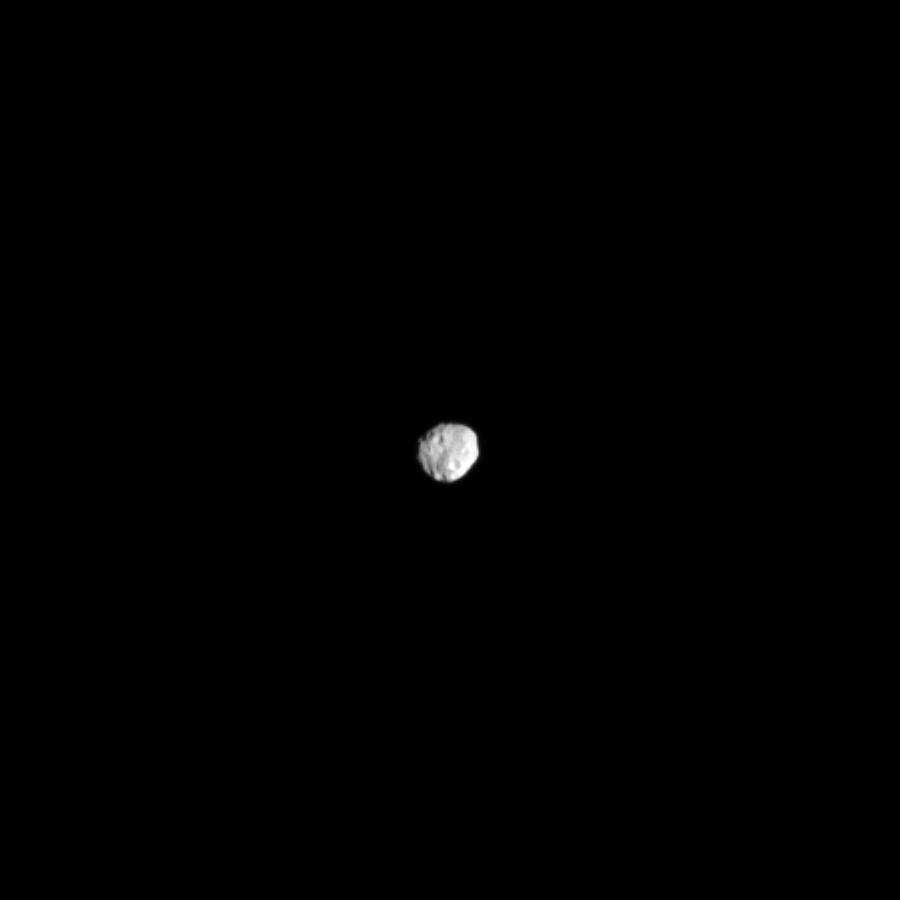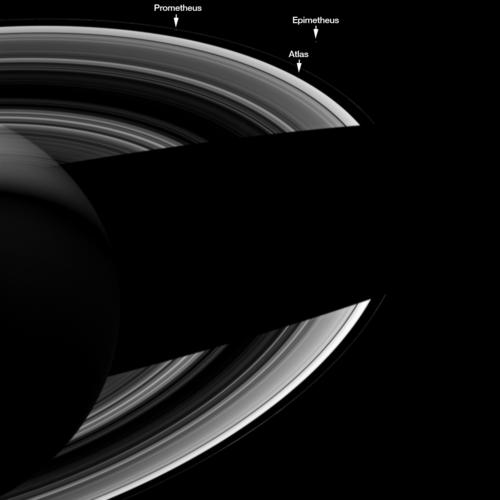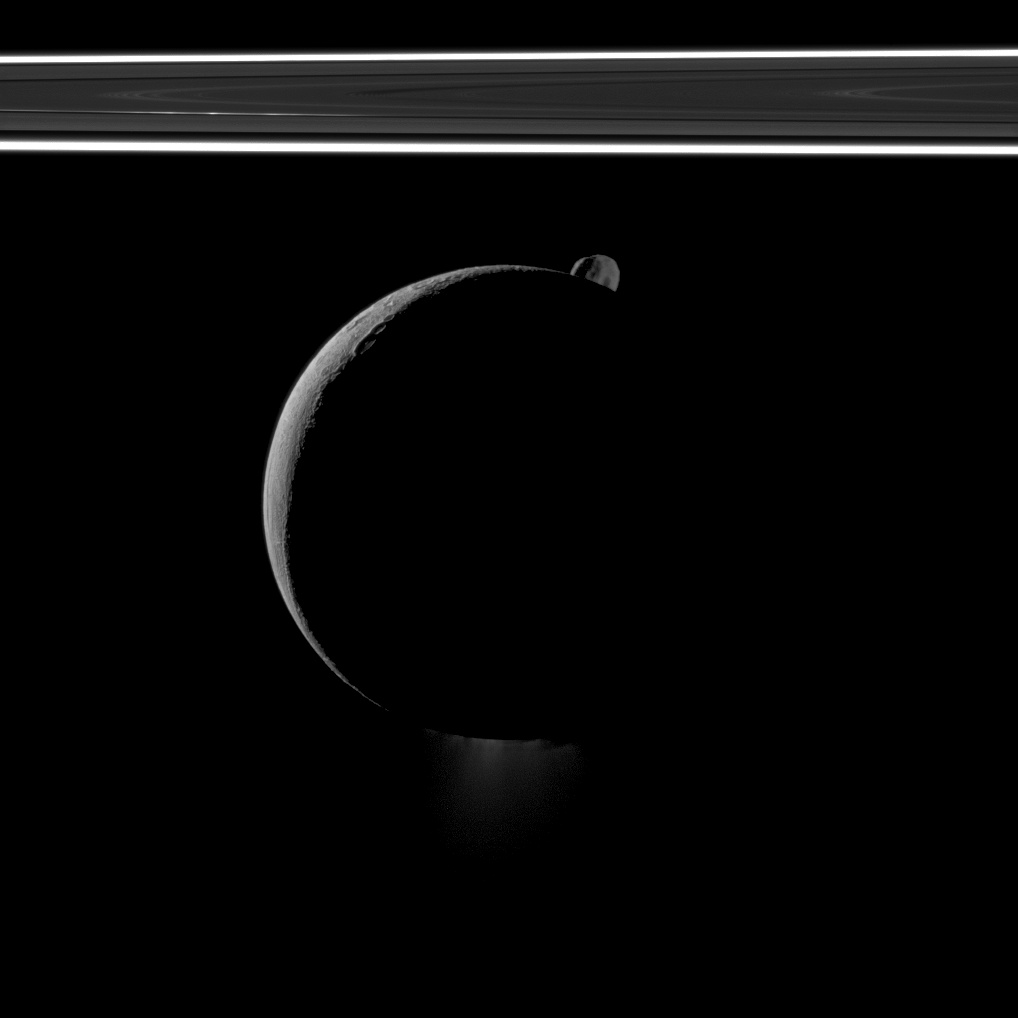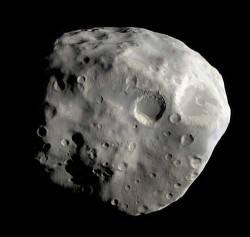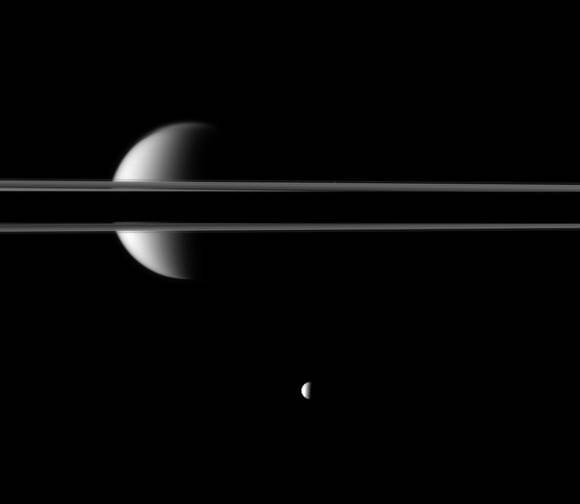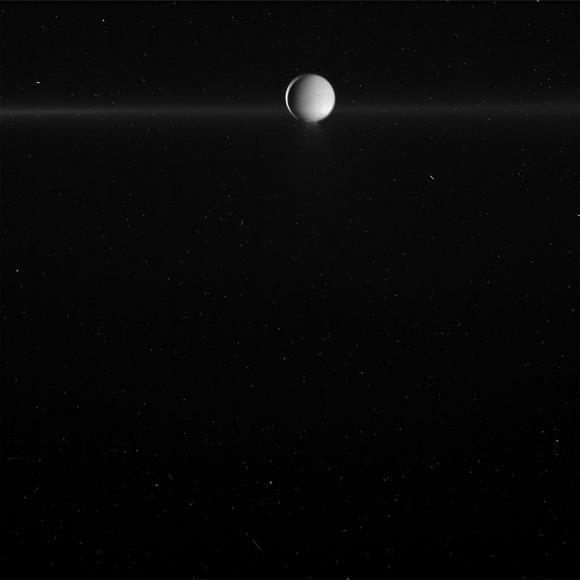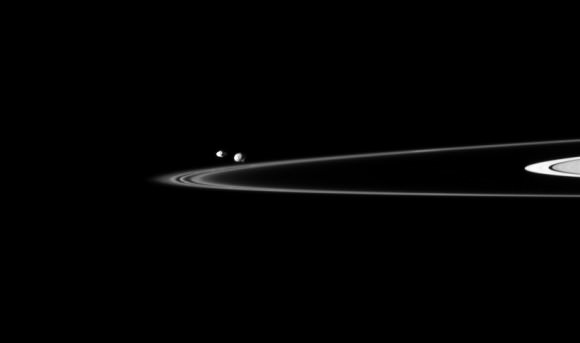One of 62 moons discovered thus far orbiting giant Saturn, Janus is a 111-mile (179-km) -wide pockmarked potato composed of rock and ice rubble. The image above shows Janus as seen with Cassini’s narrow-angle camera on September 10, 2013, from a distance of 621,000 miles (1 million km), floating against the blackness of space.
Despite its apparent isolation in the image above, though, Janus isn’t alone. It shares its orbit around Saturn with its slightly smaller sister moon Epimetheus, and they regularly catch up to each other — and even switch places.
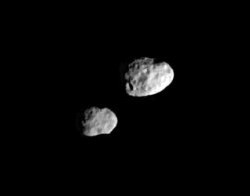
Janus and Epimetheus travel in nearly the same track, about 94,100 miles (151,500 km) out from Saturn. They occasionally pass each other, their gravity causing them to switch speeds and positions as they do; Janus goes faster and higher one time, slower and lower the next – but the two never come within more than about 6,200 miles of each other.
The two moons switch positions roughly every four years.
This scenario is referred to in astrophysics as a 1:1 resonance. Astronomers were initially confused when the moons were discovered in 1966 as it wasn’t known at the time that there were actually two separate moons in a single orbit. (This wasn’t confirmed until Voyager 1’s visit to Saturn in 1980.) It’s been suggested that Janus and Epimetheus will eventually come to orbit a single Lagrangian point around Saturn instead of trading places… in about another 20 million years.
The view above looks toward the Saturn-facing side of Janus. Covered in both dark and light colored material, Janus’ surface is thought to be coated with a layer of fine dust that slides down its steeper slopes, revealing the brighter ice beneath.
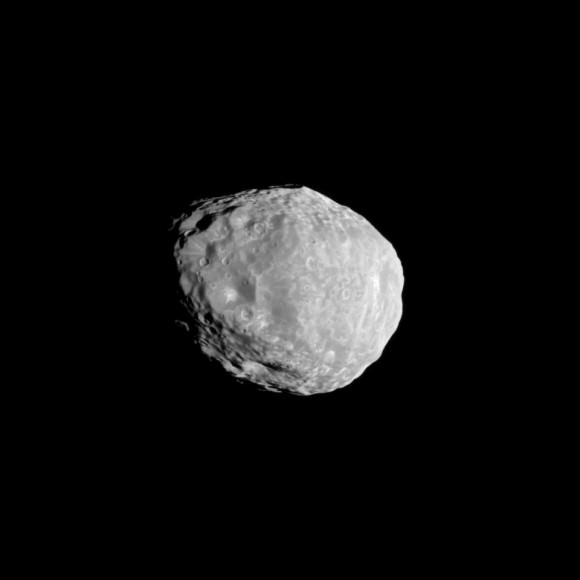
Want to see more images of Janus? Click here.
Source: Cassini Solstice Mission release

